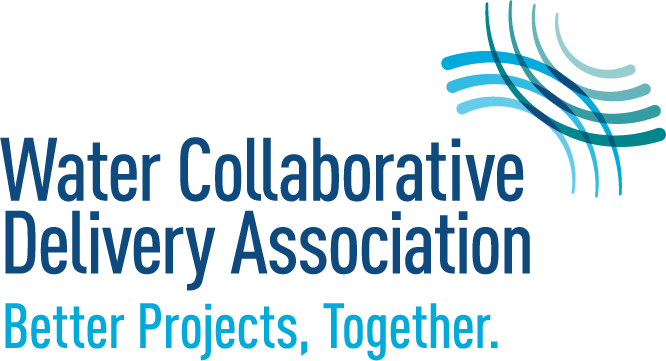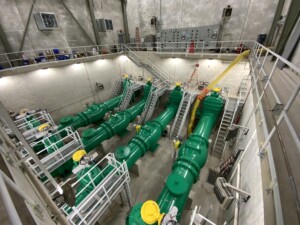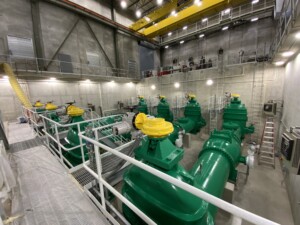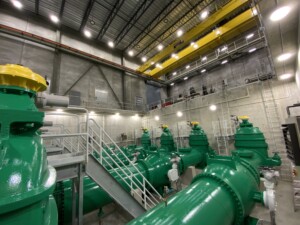Challenge
The Northeast Flow Control Facility (NEFCF), a flow control facility rated for 200 million gallons per day (mgd), and large diameter (42-inch to 96 inch) welded steel pipe (WSP) water transmission mains were constructed to provide finished water to the Northeast Water Treatment Plant (NEWTP) to supplement flows treated at the NEWTP. Challenges included working around existing utilities and process piping including live tapping into the plant’s current treatment systems and piping.
Approach
The Great Lakes Water Authority’s (GLWA) decision to proceed with this project using a fixed-price design-build project delivery method allowed GLWA to hand off the finalization of the design and pipeline routing to the design-build (DB) team. This allowed GLWA to focus its engineering resources on other items critical to its operations. The primary reason collaborative delivery was chosen was to adhere to an expedited schedule that met the constraints of the Michigan State Revolving Fund Loan schedule.
During the design phase, the DB team undertook a comprehensive site investigation utilizing “potholing” to locate all the utilities and pipelines that presented potential conflicts with the proposed alignment of the water transmission mains. This preliminary work allowed the team to avoid impacts due to unforeseen conditions when transitioning into the construction phase. In addition, GLWA was willing to work with the DB team through the design process to get early procurement items approved and released for production.
The project was in the early design phases during the initial COVID-19 shutdowns, but the team was on the leading edge with procurement enough to keep from being negatively impacted by supply chain delays to the major components of the project. Had the DB team maintained the original conservative project schedule, it may have encountered multiple delays to material deliveries. All stakeholders were willing to work together to assist in accelerating portions of the early schedule to allow more time on the tail end of the project to absorb impacts. That same level of cooperation allowed tie-ins at two points into GLWA’s continuous water delivery processes to go smoothly. On the supply side tie-in, the DB team proposed a hot tap method to make the tie-in to a live 60-inch water main. There was concern by all stakeholders about the ability of the existing main to be shut down and successfully isolated from the remaining distribution system and it was decided to proceed with a hot tap tie-in. The discharge side tie-in was also completed into a live system with the cooperation of all parties throughout the process.
Results
This project created the necessary flow control capabilities to isolate the water treatment plant for major renovations in the future. Water from other plants will be able to be used with the bypass created off this project when this plant receives a major overhaul. The DB team was able to design this project to meet the client’s needs while keeping the costs stable during the economic turbulence of the pandemic. There was potential for the project to have added costs, but because it was delivered via design-build, Walsh was able to procure long-lead piping and valves early in order keep the project on schedule and within budget.
The design-build project delivery method is a more collaborative approach. This delivery method was significantly beneficial throughout the entire project and fostered an overall atmosphere of teamwork between all project stakeholders. The project team was willing to work together to solve issues as they arose, and that cooperation can, in part, be attributed to the delivery method.
Other WCDA member involved: Jacobs (owner advisor/engineer)






